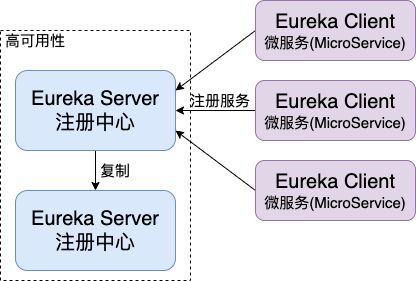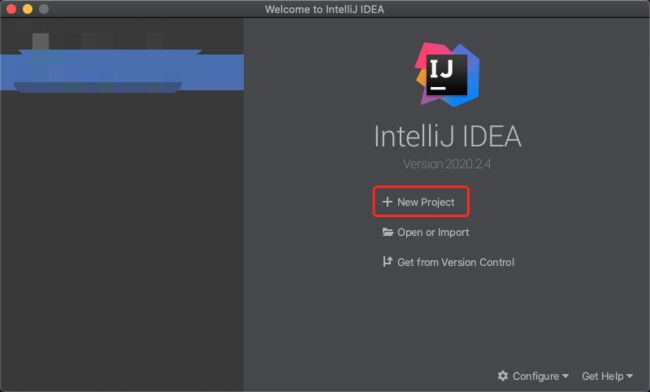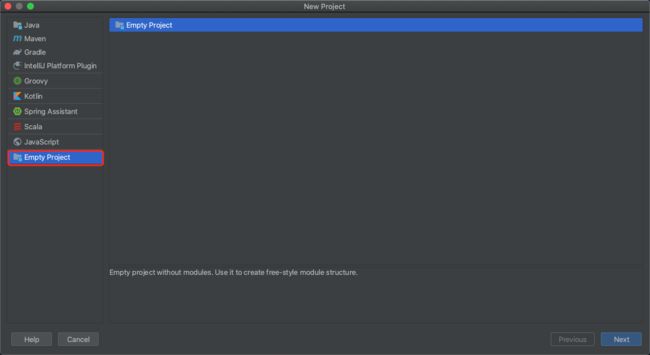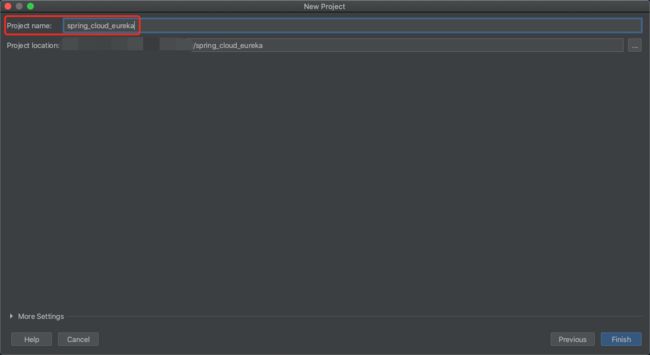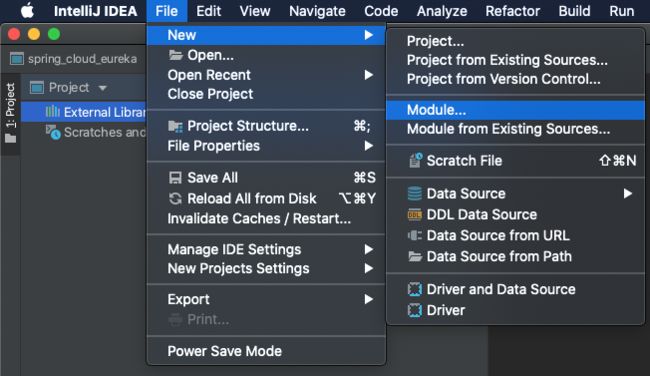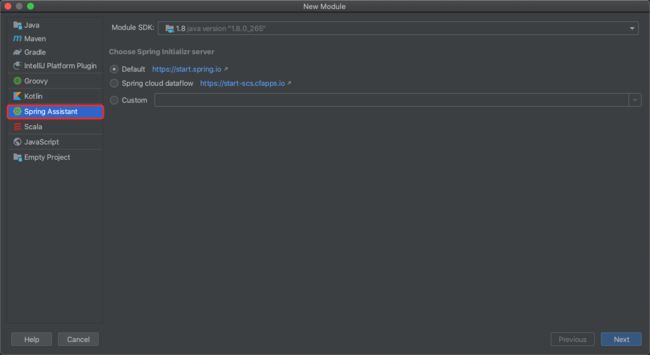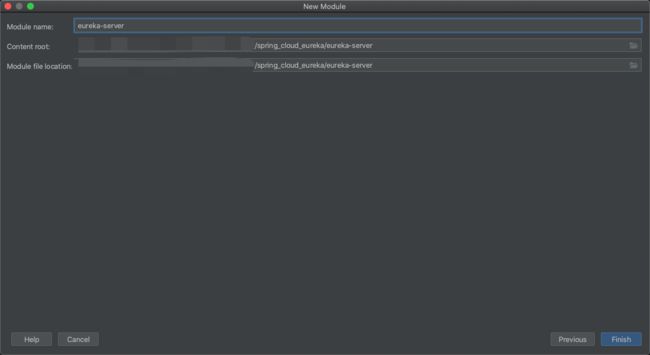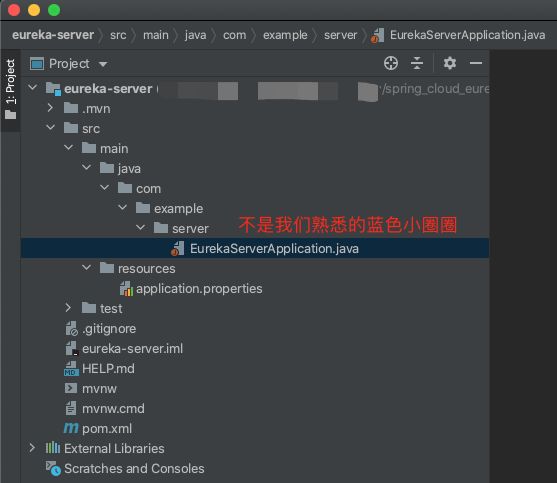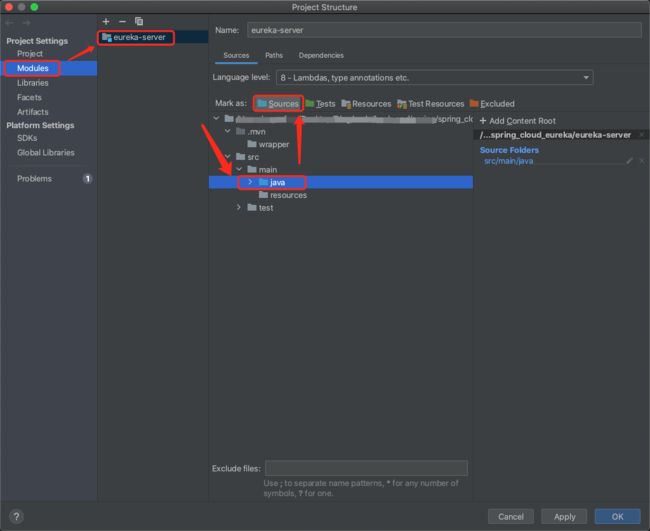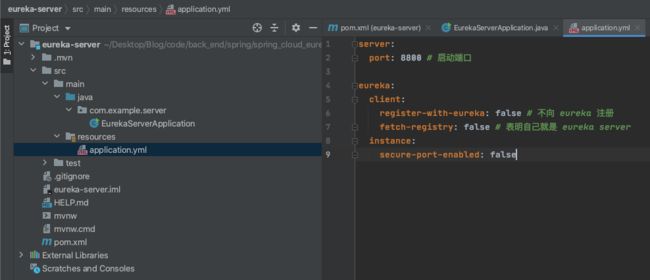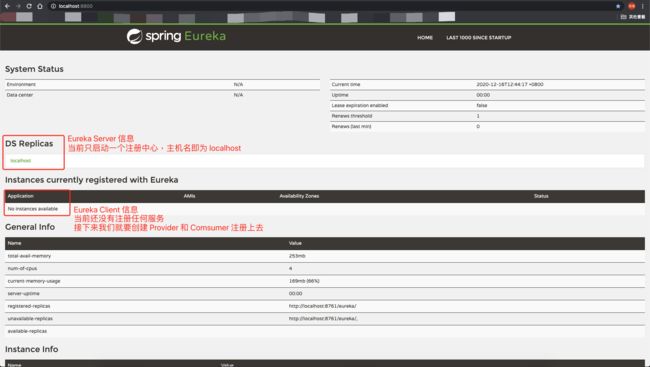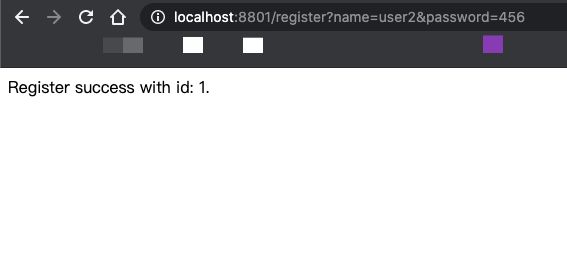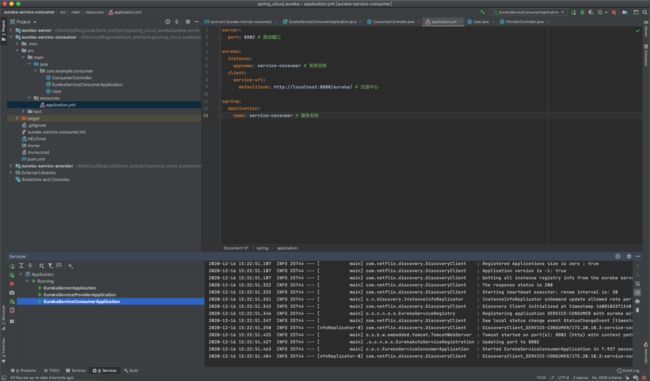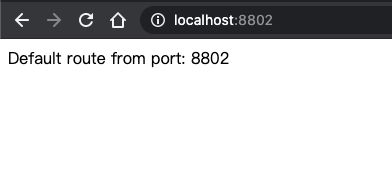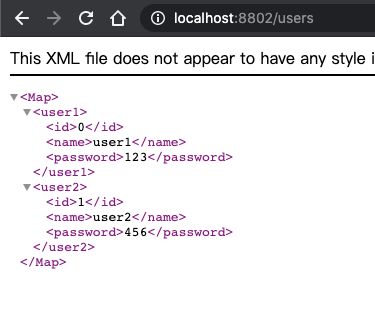Spring Cloud 实战: 手把手带你用 Netflix Eureka 实现微服务注册/发现(Service Discovery)
Spring Cloud 实战: 手把手带你用 Netflix Eureka 实现微服务注册/发现(Service Discovery)
文章目录
- Spring Cloud 实战: 手把手带你用 Netflix Eureka 实现微服务注册/发现(Service Discovery)
-
- 简介
- 参考
- 正文
-
- Service Discovery 回顾
- Netflix Eureka 架构
- 项目启动
-
- 项目结构
- 搭建项目外壳
- Eureka Server 注册中心
- Provider 微服务
- Consumer 微服务
- 完整项目内容
-
- 最终项目结构 & 配置信息 & 接口信息
- Eureka Server(eureka-server 模块)
- Provider(eureka-service-provider 模块)
- Consumer(eureka-service-consumer 模块)
- 结语
简介
前一篇:Spring Cloud: Overview 概述,对 Spring Cloud 的所有成员有大概的说明。
本篇将要来实现第一个 Spring Cloud 模块:使用 Spring Cloud Netflix Eureka 实现 Service Discovery
参考
| Eureka 概念 | https://blog.csdn.net/u013084266/article/details/100105965 |
| Spring Cloud 入门教程(一): 服务注册 | https://www.cnblogs.com/chry/p/7248947.html |
| idea创建springcloud项目图文教程(EurekaServer注册中心)(六) | https://blog.csdn.net/hcmony/article/details/77855158 |
| idea创建springcloud项目图文教程(创建服务提供者)(七) | https://blog.csdn.net/hcmony/article/details/77855843 |
| idea创建springcloud项目图文教程(创建消费者)(八) | https://blog.csdn.net/hcmony/article/details/77855903 |
正文
Service Discovery 回顾
首先我们先来回顾一下微服务的服务注册/发现(Service Discovery)功能
![]()
当我们将服务拆分成一个个微服务(MicroService)时我们可以建立一个注册中心(Register Center),之后所有服务启动时都需要向注册中心注册(Register)自己的服务,其他微服务想要调用时就可以从注册中心获取可用的服务信息。
Netflix Eureka 架构
为了实现服务注册的特性,本篇采用 Spring Cloud Netflix Eureka 依赖来达成整个目标。
与我们前面提到的类似,Eureka 的注册中心(Register Server)称为一个 Eureka Server,其他每一个微服务(MicroService)则被视为一个 Eureka Client。
当然我们也可以修改配置后启动多个 Eureka Server 并互相发现,实现注册中心的高可用性
实现细节像是什么续约啊、心跳检测啥的用于保证服务持续可用啥的这边就不过多说明了,可以查看参考链接或是自行找寻相关材料吧,这边主要专注在实现上。
项目启动
接下来我们就手把手 使用 Netflix Eureka 带你实现一个简单的微服务注册项目
项目结构
首先先给出项目的目标架构图
此次实践中我们将构建一个 Eureka Server 和两个 Eureka Client(分别是 provider 和 consumer),同时 consumer 将透过 restTemplate 向 provider 请求服务。
- 架构缺陷
这边的实践存在一个瑕疵:consumer 向 provider 请求服务时仅仅只是简单的 HTTP 请求,与外部的一般调用者无意,也就是说我们还没有用到 Eureka Server 提供的服务发现(Discovery),而仅仅实现了向 Eureka Server 注册服务(Register)的部分。下一篇我们将使用 Feign 来真正利用 Eureka Server 带来的服务发现功能。
搭建项目外壳
搭建空项目
接下来我们就开始搭建项目内容了。首先先利用 IDEA 创建空的项目,详细步骤如下:
- 点击
New Project创建新的项目
- 选择
Empty Project创建一个空项目,接下来所有微服务都放在该目录之下
- 输入项目名称
spring_cloud_eureka(可自定)
Eureka Server 注册中心
创建 Eureka Server 注册中心
- 选择
File -> New -> Module新增模块
- 使用
Spring Initializr创建 Spring 项目(IDEA 新的插件好像是叫Spring Assistant,一个东西)
- 输入一些 maven 项目配置信息(项目名称、Java 版本、包结构等)
- 选择 Spring 依赖,选
Spring Cloud Discovery -> Eureka Server
- 项目路径就放在刚刚创建的空项目之下就行了:
/spring_cloud_eureka/eureka-server
如果建好项目之后看到下面长成这幅德行
那就到 File -> Project Structure -> Module 将 src/main/java 指定为 Sources 就好了
修改依赖配置 pom.xml
- 建好项目之后第一件事先来修改
pom.xml的配置信息(最后会附上详细文件内容)
- Spring Boot 版本:
2.3.2.RELEASE - Spring Cloud 版本:
Hoxton.SR6
修改入口类
- 在入口类
EurekaServerApplication添加@EnableEurekaServer,声明为一个注册中心
修改项目配置 application.yml
- 将
application.properties改名为application.yml并填入配置信息
server:
port: 8800 # 启动端口
eureka:
client:
register-with-eureka: false # 不向 eureka 注册
fetch-registry: false # 表明自己就是 eureka server
instance:
secure-port-enabled: false
启动并查看可视化界面
- 直接在 IDEA 启动项目之后可以访问
http://localhost:8800查看可视化界面
到此我们的 Eureka Server 就创建完毕啦,不过后面的路还长着呢hhh
Provider 微服务
接下来我们要创建第二个模块:Provider 微服务,基本上与前面创建 Eureka Server 模块的顺序几乎一样(实在是不想再截一轮了就不放图了),不同的之处就用表格列出吧:
| 对应步骤 | 属性 | 值 |
|---|---|---|
| 3(maven 配置) | Artifact Id | eureka-service-provider |
| Project name | eureka-service-provider | |
| Package name | com.example.provider | |
| 4(Spring 依赖选择) | Eureka Client 依赖 | Spring Cloud Discovery.Eureka Discovery Client |
| 5(项目路径位置) | Module name | eureka-service-provider |
| Content root | xxx/spring_cloud_eureka/eureka-service-provider | |
| Module file location | xxx/spring_cloud_eureka/eureka-service-provider | |
| 6(依赖配置 pom.xml) | Eureka Client 依赖(不用修改) | 使用了 spring-cloud-starter-netflix-eureka-client 依赖 |
| Web 项目依赖 | 新增 spring-boot-starter-web 依赖 |
|
| 7(入口类声明) | Annotation | 改为添加 @EnableEurekaClient 注释,声明为 Eureka Client |
第 8 步开始来加入 Provider 的服务内容
Provider 服务 & 配置
- 首先我们先创立一个实体类
User
User.java
package com.example.provider;
public class User {
private static int count = 0;
private Integer id;
private String name;
private String password;
public User() {
id = count++;
}
public User(String name, String password) {
id = count++;
this.name = name;
this.password = password;
}
// 省略 id 的 getter
// 省略 name、password 的 getter/setter
}
- 接下来我们建立
ProviderController并加入我们的服务接口
ProviderController.java
package com.example.provider;
import org.springframework.beans.factory.annotation.Value;
import org.springframework.web.bind.annotation.GetMapping;
import org.springframework.web.bind.annotation.RestController;
import java.util.HashMap;
import java.util.Map;
@RestController // 声明为 Controller 类
public class ProviderController {
// 获取配置信息的端口
@Value("${server.port}")
private String port;
// 记录接下来的用户信息(没有持久化)
private Map<String, User> userTable = new HashMap<>();
// 默认路由
@GetMapping("/")
public String info() {
return "Default route from port: " + port;
}
// 查看所有组册用户
@GetMapping("/users")
public Map<String, User> getUserTable() {
return userTable;
}
// 注册接口
@GetMapping("/register")
public String register(String name, String password) {
// 检查参数
if (name.length() == 0) {
return "User name is required.";
}
if (password.length() == 0) {
return "User password is required.";
}
// 用户名查重
if (userTable.containsKey(name)) {
return "User " + name + " is already exist.";
}
// 建立并加入用户
User user = new User(name, password);
userTable.put(user.getName(), user);
return "Register success with id: " + user.getId() + ".";
}
// 登入接口
@GetMapping("/login")
public String login(String name, String password) {
if (!userTable.containsKey(name)) {
return "User " + name + " didn't exist.";
}
User user = userTable.get(name);
if (!user.getPassword().equals(password)) {
return "Incorrect password.";
}
return "Login success with user id: " + user.getId() + ".";
}
}
- 最后一样需要将
application.properties改名为application.yml并填入配置信息
server:
port: 8801 # 启动端口
eureka:
instance:
appname: service-provider # 实例名称
client:
service-url:
defaultZone: http://localhost:8800/eureka/ # 注册中心
spring:
application:
name: service-provider # 服务名称
这边不同的地方在于我们透过设置 eureka.client.service-url.defaultZone 来指定注册中心,接下来我们就可以在浏览器访问服务了
测试
- 我们先启动前面的 Eureka Server 然后启动我们的 Provider,并访问
http://localhost:8800查看我们的注册中心
- 接下来我们分别测试 Provider 的四个接口是否正确生效
http://localhost:8801
http://localhost:8801/register?name=user1&password=123
http://localhost:8801/register?name=user2&password=456
http://localhost:8801/users
http://localhost:8801/login?name=user1&password=123
确定好 Provider 服务可以了之后,接下来轮到 Consumer 服务
Consumer 微服务
第三个模块是 Consumer 服务,与前两个一样,也是经过 File -> New -> Module -> ... 等一系列步骤创建,详细步骤就不展开了,一样给出配置信息:
| Stage | Property | Value / Action |
|---|---|---|
| 3(maven 配置) | Artifact Id | eureka-service-consumer |
| Project name | eureka-service-consumer | |
| Package name | com.example.consumer | |
| 4(Spring 依赖选择) | Eureka Client 依赖 | Spring Cloud Discovery.Eureka Discovery Client |
| 5(项目路径位置) | Module name | eureka-service-consumer |
| Content root | xxx/spring_cloud_eureka/eureka-service-consumer | |
| Module file location | xxx/spring_cloud_eureka/eureka-service-consumer | |
| 6(依赖配置 pom.xml) | Eureka Client 依赖(不用修改) | 使用了 spring-cloud-starter-netflix-eureka-client 依赖 |
| Web 项目依赖 | 新增 spring-boot-starter-web 依赖 |
|
| 7(入口类声明) | Annotation | 改为添加 @EnableEurekaClient 注释,声明为 Eureka Client |
我们一样从第 8 步开始
Consumer 服务 & 配置
在 Consumer 我们打算的事不太多,直接代理 Provider 提供的服务就行了
- 创建实体类
User(内容与 Provider 的相仿,用于接受请求结果)
User.java
package com.example.consumer;
public class User {
private Integer id;
private String name;
private String password;
// 省略 id、name、password 的 getter
}
- 接下来我们在主入口
EurekaServiceConsumerApplication.main的下方注入一个RestTemplate,等下请求 Provider 服务会用到
EurekaServiceConsumerApplication.java
package com.example.consumer;
import org.springframework.boot.SpringApplication;
import org.springframework.boot.autoconfigure.SpringBootApplication;
import org.springframework.cloud.netflix.eureka.EnableEurekaClient;
import org.springframework.context.annotation.Bean;
import org.springframework.web.client.RestTemplate;
@EnableEurekaClient
@SpringBootApplication
public class EurekaServiceConsumerApplication {
public static void main(String[] args) {
SpringApplication.run(EurekaServiceConsumerApplication.class, args);
}
// 注入一个 RestTemplate 的 Bean
@Bean
public RestTemplate restTemplate() {
return new RestTemplate();
}
}
- 再来我们创建
ConsumerController来定义我们的接口
package com.example.consumer;
import org.springframework.beans.factory.annotation.Autowired;
import org.springframework.beans.factory.annotation.Value;
import org.springframework.web.bind.annotation.GetMapping;
import org.springframework.web.bind.annotation.RestController;
import org.springframework.web.client.RestTemplate;
import java.util.Map;
@RestController
public class ConsumerController {
// 配置文件中的端口
@Value("${server.port}")
private String port;
// 自动装配刚刚注入的 RestTemplate
@Autowired
private RestTemplate restTemplate;
// Provider 的路由
private String providerUrl = "http://localhost:8801";
@GetMapping("/")
public String info() {
return "Default route from port: " + port;
}
/*
下面三个方法都是直接代理 Provider 的服务
*/
@GetMapping("/users")
public Map<String, User> users() {
String url = providerUrl + "/users";
// 使用 getForObject 快速发起 GET 请求并获取 body
Map<String, User> res = restTemplate.getForObject(url, Map.class);
return res;
}
@GetMapping("/register")
public String register(String name, String password) {
String url = providerUrl + "/register?name=" + name + "&password=" + password;
String res = restTemplate.getForObject(url, String.class);
return "Proxy from " + port + ": " + res;
}
@GetMapping("/login")
public String login(String name, String password) {
String url = providerUrl + "/login?name=" + name + "&password=" + password;
String res = restTemplate.getForObject(url, String.class);
return "Proxy from " + port + ": " + res;
}
}
- 最后的最后一样要配置一下
application.yml
application.yml
server:
port: 8802 # 启动端口
eureka:
instance:
appname: service-consumer # 实例名称
client:
service-url:
defaultZone: http://localhost:8800/eureka/ # 注册中心
spring:
application:
name: service-consumer # 服务名称
这边基本跟 Provider 一致(同为 Eureka Client),只需要修改端口(port)和服务名称(application.name、instance.appname)就好了
启动 & 测试
- 接下来跟测试 Provider 的时候一样,先分别启动 Eureka Server、Provider、Consumer,然后到
8800查看 Eureka Server 的注册情形
我们可以看到 Provider 跟 Consumer 都正确的注册到 Eureka Server 了
- 最后简单测试一下 Consumer 的接口
http://localhost:8802
http://localhost:8802/register?name=user1&password=123
http://localhost:8801/register?name=user2&password=456
http://localhost:8802/users
由于 Consumer 只是代理 Provider 的操作,所以不论是 8801 或是 8802 注册的用户都保存在 Provider 的 userTable 中
http://localhost:8802/login?name=user1&password=123
完整项目内容
最后给出最终版本的项目完整内容
最终项目结构 & 配置信息 & 接口信息
最终项目结构
/spring_cloud_eureka
├── eureka-server
│ ├── pom.xml
│ └── src
│ ├── main
│ │ ├── java
│ │ │ └── com
│ │ │ └── example
│ │ │ └── server
│ │ │ └── EurekaServerApplication.java
│ │ └── resources
│ │ └── application.yml
│ └── test // 省略
├── eureka-service-consumer
│ ├── pom.xml
│ └── src
│ ├── main
│ │ ├── java
│ │ │ └── com
│ │ │ └── example
│ │ │ └── consumer
│ │ │ ├── ConsumerController.java
│ │ │ ├── EurekaServiceConsumerApplication.java
│ │ │ └── User.java
│ │ └── resources
│ │ └── application.yml
│ └── test // 省略
└── eureka-service-provider
├── pom.xml
└── src
├── main
│ ├── java
│ │ └── com
│ │ └── example
│ │ └── provider
│ │ ├── EurekaServiceProviderApplication.java
│ │ ├── ProviderController.java
│ │ └── User.java
│ └── resources
│ └── application.yml
└── test // 省略
服务端口信息
| Service | name | Port |
|---|---|---|
| Eureka Server | eureka-server | 8800 |
| Provider | eureka-service-provider | 8801 |
| Consumer | eureka-service-consumer | 8802 |
接口信息
| Service | API | Usage |
|---|---|---|
| 默认1 | localhost:8801 | Provider 的默认端口 |
| 默认2 | localhost:8802 | Consumer 的默认端口 |
| 注册1 | localhost:8801/register | 在 Provider 注册用户 |
| 注册2 | localhost:8802/register | 代理 Provider 的注册接口 |
| 登陆1 | localhost:8801/login | 在 Provider 登陆 |
| 登陆2 | localhost:8802/login | 代理 Provider 的登陆接口 |
| 用户列表1 | localhost:8801/users | 查看 Provider 上的所有用户信息 |
| 用户列表2 | localhost:8802/users | 查看 Provider 上的所有用户信息 |
Eureka Server(eureka-server 模块)
pom.xml
<project xmlns="http://maven.apache.org/POM/4.0.0" xmlns:xsi="http://www.w3.org/2001/XMLSchema-instance"
xsi:schemaLocation="http://maven.apache.org/POM/4.0.0 https://maven.apache.org/xsd/maven-4.0.0.xsd">
<modelVersion>4.0.0modelVersion>
<parent>
<groupId>org.springframework.bootgroupId>
<artifactId>spring-boot-starter-parentartifactId>
<version>2.3.2.RELEASEversion>
<relativePath/>
parent>
<groupId>com.examplegroupId>
<artifactId>eureka-serverartifactId>
<version>0.0.1-SNAPSHOTversion>
<name>eureka-servername>
<description>Demo project for Spring Bootdescription>
<properties>
<java.version>1.8java.version>
<spring-cloud.version>Hoxton.SR6spring-cloud.version>
properties>
<dependencies>
<dependency>
<groupId>org.springframework.cloudgroupId>
<artifactId>spring-cloud-starter-netflix-eureka-serverartifactId>
dependency>
<dependency>
<groupId>org.springframework.bootgroupId>
<artifactId>spring-boot-starter-testartifactId>
<scope>testscope>
dependency>
dependencies>
<dependencyManagement>
<dependencies>
<dependency>
<groupId>org.springframework.cloudgroupId>
<artifactId>spring-cloud-dependenciesartifactId>
<version>${spring-cloud.version}version>
<type>pomtype>
<scope>importscope>
dependency>
dependencies>
dependencyManagement>
<build>
<plugins>
<plugin>
<groupId>org.springframework.bootgroupId>
<artifactId>spring-boot-maven-pluginartifactId>
plugin>
plugins>
build>
<repositories>
<repository>
<id>spring-milestonesid>
<name>Spring Milestonesname>
<url>https://repo.spring.io/milestoneurl>
repository>
repositories>
project>
application.yml
server:
port: 8800 # 启动端口
eureka:
client:
register-with-eureka: false # 不向 eureka 注册
fetch-registry: false # 表明自己就是 eureka server
instance:
secure-port-enabled: false
EurekaServerApplication.java
package com.example.server;
import org.springframework.boot.SpringApplication;
import org.springframework.boot.autoconfigure.SpringBootApplication;
import org.springframework.cloud.netflix.eureka.server.EnableEurekaServer;
@EnableEurekaServer
@SpringBootApplication
public class EurekaServerApplication {
public static void main(String[] args) {
SpringApplication.run(EurekaServerApplication.class, args);
}
}
Provider(eureka-service-provider 模块)
pom.xml
<project xmlns="http://maven.apache.org/POM/4.0.0" xmlns:xsi="http://www.w3.org/2001/XMLSchema-instance"
xsi:schemaLocation="http://maven.apache.org/POM/4.0.0 https://maven.apache.org/xsd/maven-4.0.0.xsd">
<modelVersion>4.0.0modelVersion>
<parent>
<groupId>org.springframework.bootgroupId>
<artifactId>spring-boot-starter-parentartifactId>
<version>2.3.2.RELEASEversion>
<relativePath/>
parent>
<groupId>com.examplegroupId>
<artifactId>eureka-service-providerartifactId>
<version>0.0.1-SNAPSHOTversion>
<name>eureka-service-providername>
<description>Demo project for Spring Bootdescription>
<properties>
<java.version>1.8java.version>
<spring-cloud.version>Hoxton.SR6spring-cloud.version>
properties>
<dependencies>
<dependency>
<groupId>org.springframework.cloudgroupId>
<artifactId>spring-cloud-starter-netflix-eureka-clientartifactId>
dependency>
<dependency>
<groupId>org.springframework.bootgroupId>
<artifactId>spring-boot-starter-webartifactId>
dependency>
<dependency>
<groupId>org.springframework.bootgroupId>
<artifactId>spring-boot-starter-testartifactId>
<scope>testscope>
dependency>
dependencies>
<dependencyManagement>
<dependencies>
<dependency>
<groupId>org.springframework.cloudgroupId>
<artifactId>spring-cloud-dependenciesartifactId>
<version>${spring-cloud.version}version>
<type>pomtype>
<scope>importscope>
dependency>
dependencies>
dependencyManagement>
<build>
<plugins>
<plugin>
<groupId>org.springframework.bootgroupId>
<artifactId>spring-boot-maven-pluginartifactId>
plugin>
plugins>
build>
<repositories>
<repository>
<id>spring-milestonesid>
<name>Spring Milestonesname>
<url>https://repo.spring.io/milestoneurl>
repository>
repositories>
project>
application.yml
server:
port: 8801 # 启动端口
eureka:
instance:
appname: service-provider # 实例名称
client:
service-url:
defaultZone: http://localhost:8800/eureka/ # 注册中心
spring:
application:
name: service-provider # 服务名称
EurekaServiceProviderApplication.java
package com.example.provider;
import org.springframework.boot.SpringApplication;
import org.springframework.boot.autoconfigure.SpringBootApplication;
import org.springframework.cloud.netflix.eureka.EnableEurekaClient;
@EnableEurekaClient
@SpringBootApplication
public class EurekaServiceProviderApplication {
public static void main(String[] args) {
SpringApplication.run(EurekaServiceProviderApplication.class, args);
}
}
ProviderController.java
package com.example.provider;
import org.springframework.beans.factory.annotation.Value;
import org.springframework.web.bind.annotation.GetMapping;
import org.springframework.web.bind.annotation.RestController;
import java.util.HashMap;
import java.util.Map;
@RestController
public class ProviderController {
@Value("${server.port}")
private String port;
private Map<String, User> userTable = new HashMap<>();
@GetMapping("/")
public String info() {
return "Default route from port: " + port;
}
@GetMapping("/users")
public Map<String, User> getUserTable() {
return userTable;
}
@GetMapping("/register")
public String register(String name, String password) {
if (name.length() == 0) {
return "User name is required.";
}
if (password.length() == 0) {
return "User password is required.";
}
if (userTable.containsKey(name)) {
return "User " + name + " is already exist.";
}
User user = new User(name, password);
userTable.put(user.getName(), user);
return "Register success with id: " + user.getId() + ".";
}
@GetMapping("/login")
public String login(String name, String password) {
if (!userTable.containsKey(name)) {
return "User " + name + " didn't exist.";
}
User user = userTable.get(name);
if (!user.getPassword().equals(password)) {
return "Incorrect password.";
}
return "Login success with user id: " + user.getId() + ".";
}
}
User.java
package com.example.provider;
public class User {
private static int count = 0;
private Integer id;
private String name;
private String password;
public User() {
id = count++;
}
public User(String name, String password) {
id = count++;
this.name = name;
this.password = password;
}
public Integer getId() {
return id;
}
public String getName() {
return name;
}
public void setName(String name) {
this.name = name;
}
public String getPassword() {
return password;
}
public void setPassword(String password) {
this.password = password;
}
}
Consumer(eureka-service-consumer 模块)
pom.xml
<project xmlns="http://maven.apache.org/POM/4.0.0" xmlns:xsi="http://www.w3.org/2001/XMLSchema-instance"
xsi:schemaLocation="http://maven.apache.org/POM/4.0.0 https://maven.apache.org/xsd/maven-4.0.0.xsd">
<modelVersion>4.0.0modelVersion>
<parent>
<groupId>org.springframework.bootgroupId>
<artifactId>spring-boot-starter-parentartifactId>
<version>2.3.2.RELEASEversion>
<relativePath/>
parent>
<groupId>com.examplegroupId>
<artifactId>eureka-service-consumerartifactId>
<version>0.0.1-SNAPSHOTversion>
<name>eureka-service-consumername>
<description>Demo project for Spring Bootdescription>
<properties>
<java.version>1.8java.version>
<spring-cloud.version>Hoxton.SR6spring-cloud.version>
properties>
<dependencies>
<dependency>
<groupId>org.springframework.cloudgroupId>
<artifactId>spring-cloud-starter-netflix-eureka-clientartifactId>
dependency>
<dependency>
<groupId>org.springframework.bootgroupId>
<artifactId>spring-boot-starter-webartifactId>
dependency>
<dependency>
<groupId>org.springframework.bootgroupId>
<artifactId>spring-boot-starter-testartifactId>
<scope>testscope>
dependency>
dependencies>
<dependencyManagement>
<dependencies>
<dependency>
<groupId>org.springframework.cloudgroupId>
<artifactId>spring-cloud-dependenciesartifactId>
<version>${spring-cloud.version}version>
<type>pomtype>
<scope>importscope>
dependency>
dependencies>
dependencyManagement>
<build>
<plugins>
<plugin>
<groupId>org.springframework.bootgroupId>
<artifactId>spring-boot-maven-pluginartifactId>
plugin>
plugins>
build>
<repositories>
<repository>
<id>spring-milestonesid>
<name>Spring Milestonesname>
<url>https://repo.spring.io/milestoneurl>
repository>
repositories>
project>
application.yml
server:
port: 8802 # 启动端口
eureka:
instance:
appname: service-consumer # 实例名称
client:
service-url:
defaultZone: http://localhost:8800/eureka/ # 注册中心
spring:
application:
name: service-consumer # 服务名称
EurekaServiceConsumerApplication.java
package com.example.consumer;
import org.springframework.boot.SpringApplication;
import org.springframework.boot.autoconfigure.SpringBootApplication;
import org.springframework.cloud.netflix.eureka.EnableEurekaClient;
import org.springframework.context.annotation.Bean;
import org.springframework.web.client.RestTemplate;
@EnableEurekaClient
@SpringBootApplication
public class EurekaServiceConsumerApplication {
public static void main(String[] args) {
SpringApplication.run(EurekaServiceConsumerApplication.class, args);
}
@Bean
public RestTemplate restTemplate() {
return new RestTemplate();
}
}
ConsumerController.java
package com.example.consumer;
import org.springframework.beans.factory.annotation.Autowired;
import org.springframework.beans.factory.annotation.Value;
import org.springframework.web.bind.annotation.GetMapping;
import org.springframework.web.bind.annotation.RestController;
import org.springframework.web.client.RestTemplate;
import java.util.Map;
@RestController
public class ConsumerController {
@Value("${server.port}")
private String port;
@Autowired
private RestTemplate restTemplate;
private String providerUrl = "http://localhost:8801";
@GetMapping("/")
public String info() {
return "Default route from port: " + port;
}
@GetMapping("/users")
public Map<String, User> users() {
String url = providerUrl + "/users";
Map<String, User> res = restTemplate.getForObject(url, Map.class);
return res;
}
@GetMapping("/register")
public String register(String name, String password) {
String url = providerUrl + "/register?name=" + name + "&password=" + password;
String res = restTemplate.getForObject(url, String.class);
return "Proxy from " + port + ": " + res;
}
@GetMapping("/login")
public String login(String name, String password) {
String url = providerUrl + "/login?name=" + name + "&password=" + password;
String res = restTemplate.getForObject(url, String.class);
return "Proxy from " + port + ": " + res;
}
}
User.java
package com.example.consumer;
public class User {
private Integer id;
private String name;
private String password;
public Integer getId() {
return id;
}
public String getName() {
return name;
}
public String getPassword() {
return password;
}
}
结语
呼!终于结束了,其实整个服务也没啥内容,光是配置就弄了好久,而且好像该弄个代码仓库了,这样一个个复制贴上也不是办法hhh。
下一篇将带来使用 Feign 实现根据 Eureka Server 注册中心中的服务注册信息来实现内部的服务间调用(service-to-service calls)。

